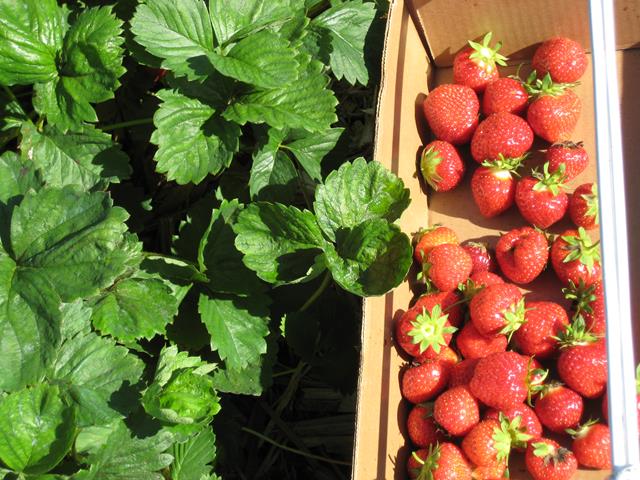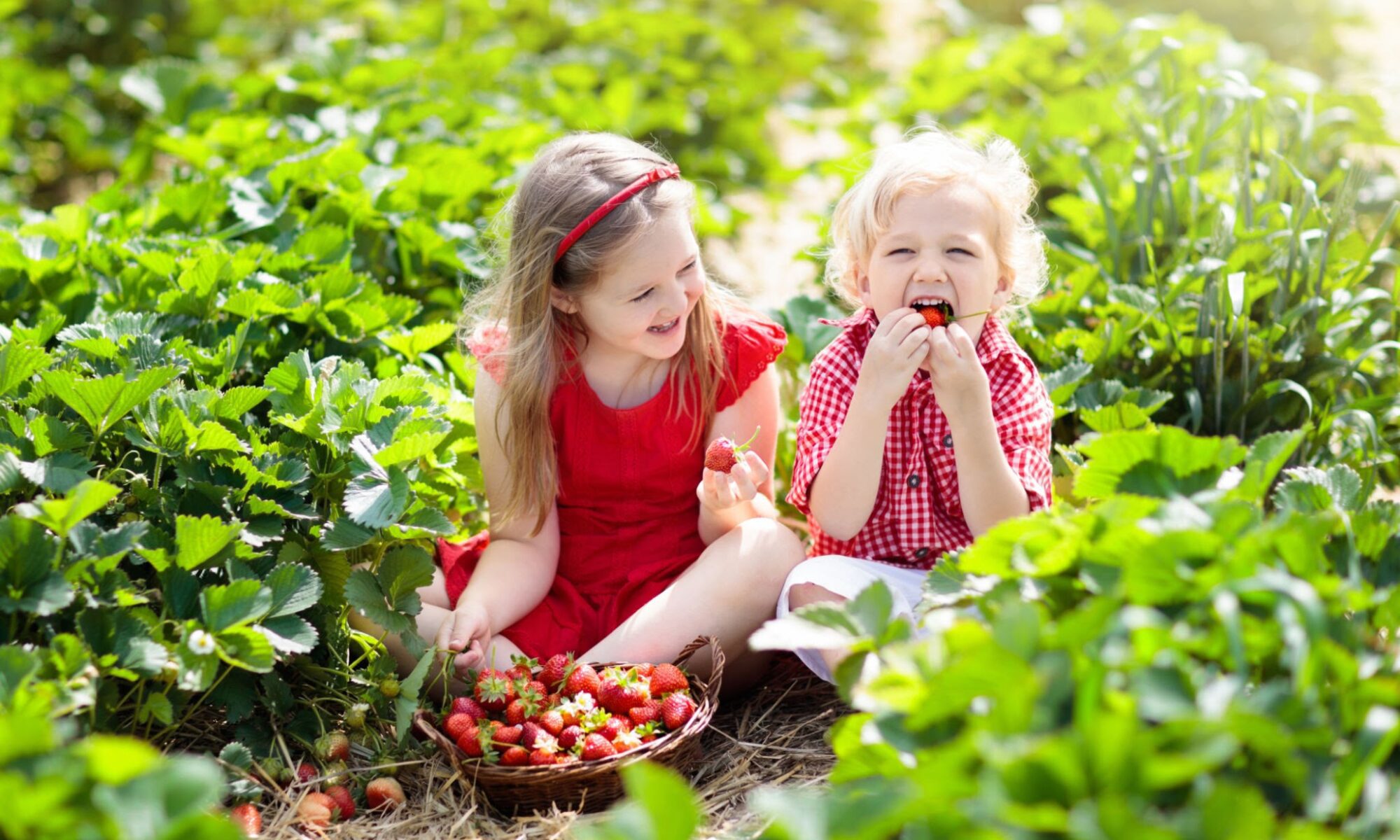Thousands of strawberry varieties are cultivated worldwide, with dozens in Europe alone.🌎 Why so many? Simply put, there is no one perfect variety that combines all advantages without any disadvantages. Each strawberry variety, without exception, has its pros and cons. For instance, if a variety is known for its excellent taste, high yield, and post-harvest durability, it often may lack in winter hardiness and disease resistance. Moreover, different varieties bear fruit at different times.🍓 Continue reading “The Secrets of Picking the Best Strawberry Varieties: A Guide for Gardeners”
Licensed Varieties – What are they?
Licensed strawberry🍓 varieties are those that have been developed by breeders and are protected by copyright
Continue reading “Licensed Varieties – What are they?”
Strawberries on KETO – Low Carb, Big Taste!
Strawberries 🍓 are an excellent choice for the keto diet, mainly due to their low carbohydrate content. They are one of the fruits with the lowest sugar content, making them suitable for a low-carb diet.
Continue reading “Strawberries on KETO – Low Carb, Big Taste!”
Balcony Strawberries? Pick These Varieties!
If you want to grow strawberries on a balcony or terrace, we advise choosing varieties that thrive in pots and planters, as well as those that are resistant to various weather conditions and typical strawberry diseases. Traditional varieties are generally not suitable for balcony cultivation; only everbearing ones—those that will fruit until late autumn—are recommended. Here are a few varieties that are great for balcony growing:
Ostara: This variety fruits for a very long time, often until the first frosts. It produces not too large but very tasty fruits. Ostara is well-known among fruit producers for its high resistance to many diseases characteristic of strawberries, which undoubtedly facilitates its cultivation.
Selva: A very gracious variety of Californian origin, Selva blooms and fruits continuously for many months. It is characterized by beautiful, large, and sweet fruits. Additionally, it is resistant to most strawberry diseases, meaning it does not require strong chemical protection.
San Andreas: An attractive variety bred in the USA, San Andreas has large, intensely red, and well-shaped fruits. In terms of taste, it is a revelation! It fruits from the end of May throughout the vegetation period, and if not for winter, it would probably fruit until spring. San Andreas is distinguished by its resistance to some strawberry diseases and is not difficult to cultivate.
Ania: This variety comes from sunny Italy and is characterized by large, shiny, and incredibly sweet fruits with aromatic pulp. Ania fruits for a very long time, practically until the first frosts. It shows significant resistance to most fungal diseases of strawberries, making it a very attractive choice for those who prefer not to use a sprayer.
Fruits for Diabetics: Strawberries Make the List
For individuals with diabetes, it is important to select berries with a low glycemic index (GI) that have a lesser impact on blood sugar levels.🧐
Here are a few berries typically recommended for diabetics:
Continue reading “Fruits for Diabetics: Strawberries Make the List”
Sweet Wild Strawberries on the Balcony – It’s Possible!
Growing alpine strawberries on a balcony or terrace is not difficult and can provide a lot of satisfaction, especially if there are small children at home.
How to get started?
Just like with garden strawberries, we should equip ourselves with sufficiently deep (no less than 20 cm) pots or boxes and look for a sunny or only slightly shaded spot for them. Fill the pots with soil, preferably one “dedicated” to the cultivation of strawberries and alpine strawberries, which can be easily purchased at any garden store.
Planting Instructions:
- Plant strong and well-rooted seedlings at the same depth as they grew in the nursery, maintaining proper spacing, usually about 25 cm apart from one another.
Denser planting does not make sense, as alpine strawberries, although small at the beginning, grow vigorously and in a short time reach sizes no smaller than strawberry plants. - After planting the seedlings, remember to water them properly.
Alpine strawberries like moist soil, but not wet, so we do not water them “in advance,” but also try not to dry out the root system. - About every two weeks, it is good to fertilize the growing alpine strawberries with one of the fertilizers specifically designed for strawberries and alpine strawberries, following the instructions that are always on the package.
How to Grow Strawberries on a Balcony: A Step-by-Step Guide
Not everyone has the opportunity to grow strawberries in a garden or allotment.
Some are “condemned” to grow them on a balcony or possibly on a terrace.
Is it difficult? Definitely not. You just need to follow a few of the rules below:
- Prepare healthy and strongly rooted seedlings.
This is the starting point, without which further activities will make little sense. - Varieties:
We especially recommend those from the group of repeat-fruiting, which will bear fruit throughout the season until late autumn. - Location:
Choose a sunny spot and an appropriate box or pot with a depth of at least 20 cm, with plenty of holes in the bottom for draining excess water (so-called drainage). - Soil:
Fill the box (or pot) with fertile, yet permeable soil, preferably with a slightly acidic pH. - Planting:
Plant young plants at the same depth as they grew in the nursery, maintaining proper spacing, i.e., no less than 25 to 30 cm from seedling to seedling. - Watering:
After planting, water the strawberries generously. - Fertilizing:
Every 2 weeks, feed the plants using a special strawberry fertilizer (instructions for use are always found on the package). - Maintenance:
Water the strawberries regularly, not allowing the plants to dry out; the soil in pots should be moist, not wet.
When and How to Trim Strawberry and Alpine Strawberry Leaves?
Pruning strawberry leaves is an important aspect of their care, and the rules for pruning are similar for both strawberries and alpine strawberries🍓
Continue reading “When and How to Trim Strawberry and Alpine Strawberry Leaves?”
Strawberry Face Mask – Natural Recipe for Glowing Skin! Bye Bye Acne!
Strawberries 🍓 can be an effective natural remedy in the fight against acne due to their anti-inflammatory, antioxidant properties, and the content of salicylic acid, which is a natural exfoliating agent.
Continue reading “Strawberry Face Mask – Natural Recipe for Glowing Skin! Bye Bye Acne!”
How to Increase Soil Organic Matter? Importance of Organic Matter in Strawberry Production. Organic Matter – the Secret of Bountiful Crops.
It has long been known that humus plays a key role in the soil and in the numerous beneficial processes that occur within it. It is humus that gives the soil a granular structure, promotes moisture retention in the soil, is a source of nutrients for plants, and provides invaluable support for beneficial soil microorganisms.
What can be done to increase the humus content in the soil? It is worth using homemade compost both before planting strawberries and during the vegetation period. Every few years, it is beneficial to spread and dig in old, well-rotted manure in the garden. Mulching strawberries with straw or another organic mass, such as ground branches, also promotes the accumulation of humus in the soil.
Introducing and maintaining the right amount of humus in the soil will allow strawberries to grow healthily and bear fruit abundantly.












